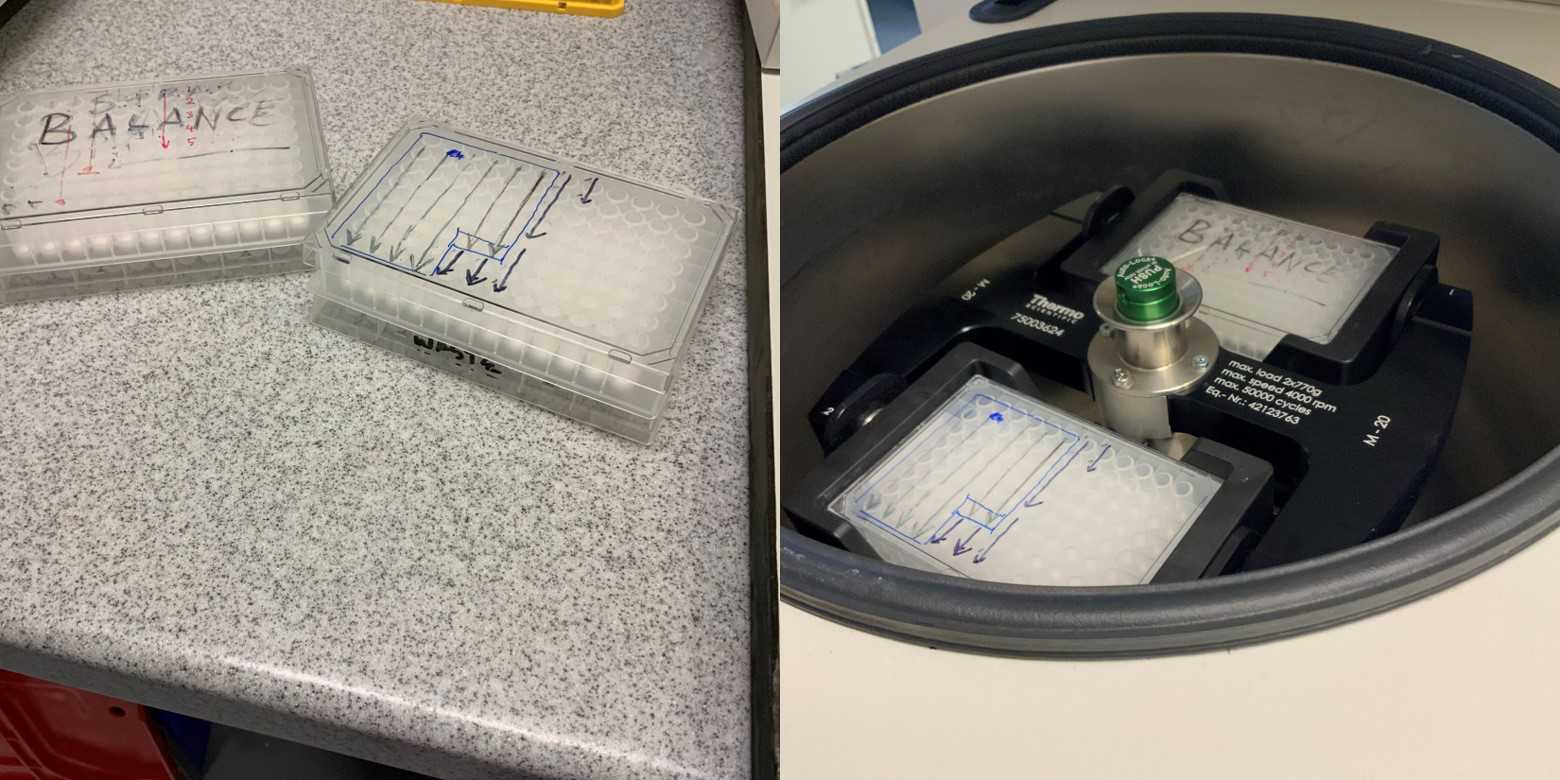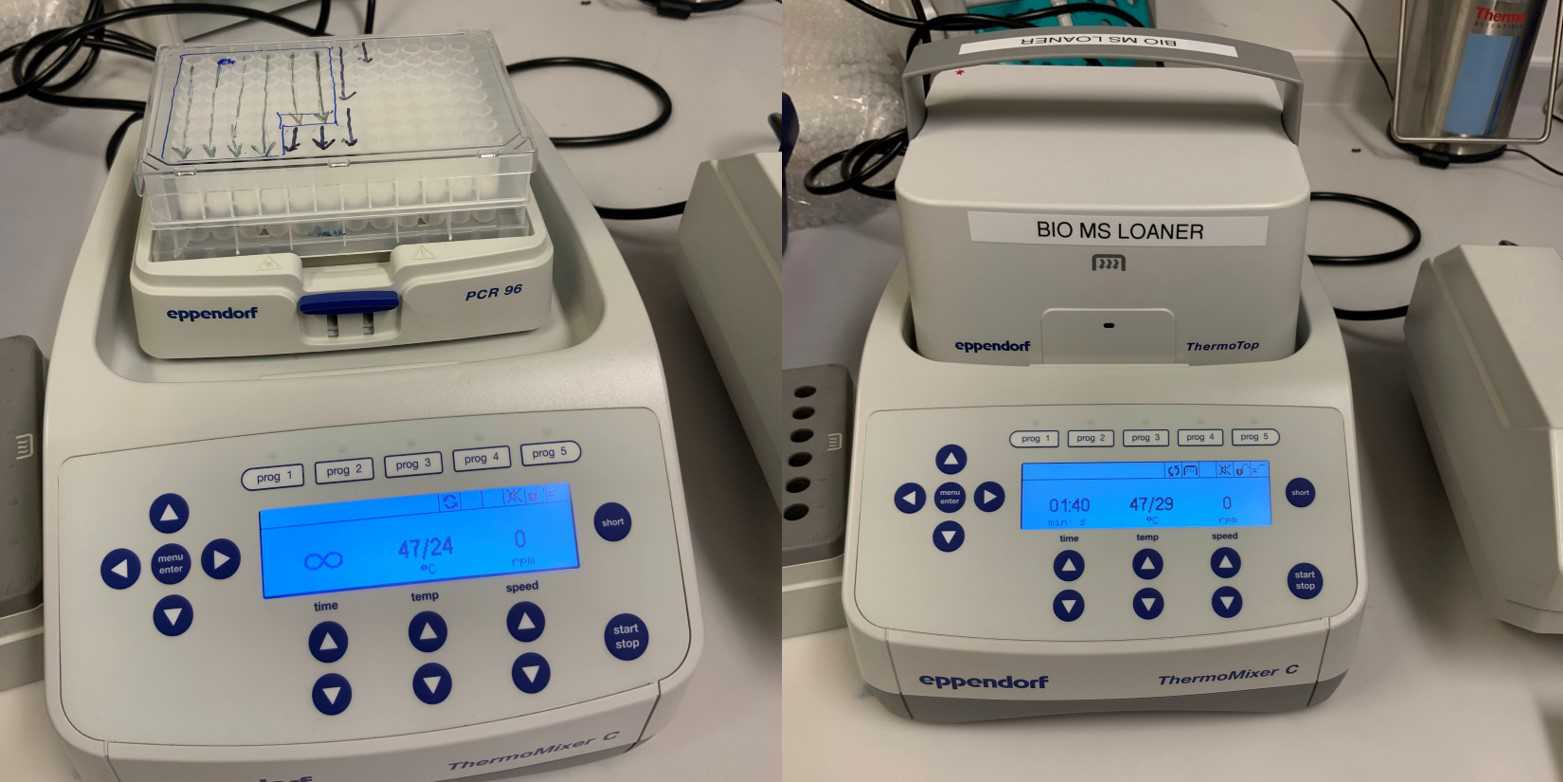S-Trap™ plate digestion protocol (Protifi) of proteins for LC-MS / proteomics
ronan o'cualain, Stacey Warwood, David Knight, Emmakeevill, James Allsey
S-trap™ 96-well plate
Digestion
Elution
Digestion protocol
Eppendorf thermomixer
Mass spec analysis
proteomics
quartz
s-trapping
S-trap
Protifi
desalting
clean-up
LC-MS
off-line
offline
enzymatic digestion
automatable
Abstract
This protocol details the in-house BioMS procedure of S-Trap™ 96-well plate protein clean-up and digestion.
It is adapted from the long protocol from Protifi (as on August 2022) - https://files.protifi.com/protocols/s-trap-96-well-plate-long-1-4.pdf
Before start
Prepare your protein samples using the other protocols in this collection.
The following steps are optimised for volumes of 50µL and 100µL of protein.
For other volumes and amounts of protein, adjust accordingly, by dilution into S-trap lysis buffer. It is recommended that the final concentration of SDS be at least greater than 3% (v/v), and up to 15% (v/v) , and a protein load between 50µg to 250µg for the process to work successfully.
Use the 1.5 mL adaptor for the Eppendorf Thermomixer, and set the thermomixer to47°C ,1h 15m 0s , and a speed of0rpm,0h 0m 0s (i.e. no shaking).
Attachments
Steps
Sample preparation
To the 50µLvolume of sample in S-trap lysis buffer, add 5µL of 12% (v/v) aqueous phosphoric acid at 1:10 for a final concentration of 1.2% (v/v) phosphoric acid and vortex mix.
Add 350µL of S-Trap binding buffer to the acidified lysis buffer and mix.
Put the S-Trap plate on top of a clean 96 well plate, add the acidified methanolic SDS lysate into the plate.
Sample Trapping
Repeat the previous two steps until there all sample has been applied to the S-Trap plate.
Sample Washing
Wash captured protein with one wash of 200µL of MTBE solution, simply add 200µL of the MTBE solution to the column, and spin at 1000x g,0h 0m 0s for 0h 2m 0s.
Following this, perform three washes of 200µL of S-Trap binding buffer, again, add 200µL of the S-trap binding buffer, and centrifuge at 1000x g,0h 0m 0s for 0h 2m 0s.
Digest proteins
Move S-Trap digestion plate on top of a clean receiver plate.
Locate the trypsin aliquots. They are in the top shelf of freezer 3.
The frozen aliquots are at a volume of 10µL containing 20µg of trypsin (concentration of 2µg/µL1).
Add 250µL of digestion buffer to the aliquot. This gives a total volume of 260µL, enough for 2 S-Trap digestions.
Add 125µL of digestion buffer containing protease into the top of the wells.
Place cover over the stacked plates.
OPTIONALSTEP: If you wish, you may also set up this digestion step overnight , with no impact on the S-trap process.
To do this, set the Thermomixer to 37°C and incubate overnight, again with no shaking.
Elute peptides:
Add 80µL of digestion buffer to all wells of the S-Trap digestion plate.
Centrifuge the plate at 1000x g,0h 0m 0s for 0h 2m 0s or until all solution has passed through.
Add 80µL of 0.1% aqueous formic acid to all wells of the S-Trap digestion plate and spin through at 1000x g,0h 0m 0s for 0h 2m 0s.
Further elute peptides with 55µL of 30% aqueous acetonitrile containing 0.1% formic acid and spin through at 1000x g,0h 0m 0s for 0h 2m 0s.
This elution assists in recovery of hydrophobic peptides.
Proceed to R3 plate desalting or store in a refrigerator 0h 2m 0s.




